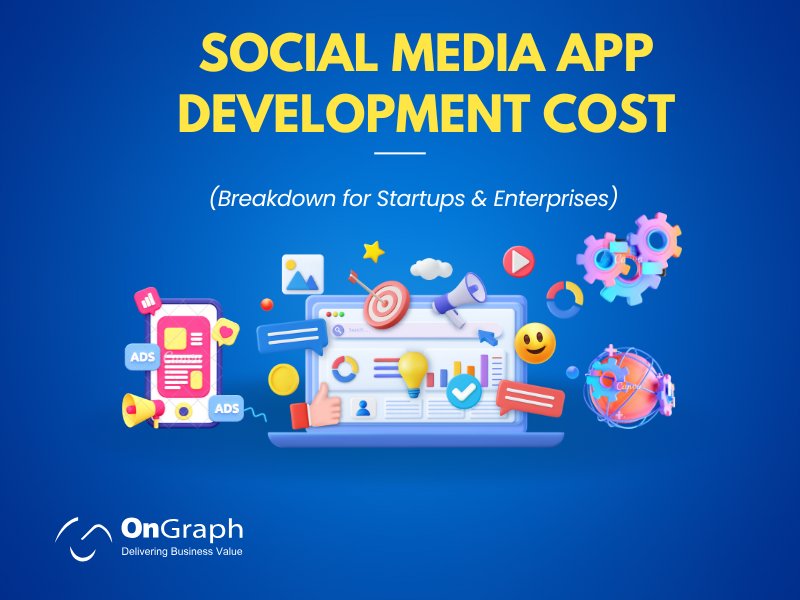In this article
- What is Supply Chain Risk Management Software?
- Key Features & Functionalities (with Real-World Examples)
- Quantifiable Benefits & ROI Impact
- Industry-Specific Use Cases
- Implementation Best Practices
- Common Challenges & Solutions
- Future Trends & Technology Developments
- Selecting the Right Solution: Comparison Factors
- Conclusion
In today’s fast-moving global economy, disruption is the only constant. That makes supply chain risk management software a strategic imperative for any organization relying on suppliers, vendors, and third-party service providers.
The right software helps you pre-empt issues, respond quickly, and maintain stability—not just react when things go wrong.
This in-depth resource will guide you step-by-step through the world of supply-chain risk management software: what it is, how it works, key benefits and ROI backed by data, use-cases across industries (logistics, transportation, construction and more), best practices for implementation, common pitfalls and solutions, future trends you should watch, and a detailed comparison checklist to help you select a solution that fits your needs.
Whether you’re evaluating supplier risk management software, vendor risk management solutions, or third-party risk management software, this guide is designed to position you as a confident decision-maker.
What is Supply Chain Risk Management Software?
Definition and purpose
At its core, supply chain risk management software enables organizations to identify, assess, monitor, and mitigate risks that arise across the supply chain—spanning suppliers, vendors, transporters, service providers, and internal processes.
Unlike basic procurement or inventory tools, the focus is on resilience, not just efficiency.
These platforms typically integrate data from internal systems (procurement, ERP, logistics) and external feeds (geopolitical events, weather, financial health) to produce real-time alerts, analytics, and dashboards.
Why does the term matter?
Because supply chains today are highly interconnected, visibility stops being point-to-point and becomes multi-tier. A delay or failure in a Tier 3 supplier may cascade into a downstream outage.
That’s where a tool such as vendor risk management software or third-party risk management software plays a pivotal role.
According to industry research, fewer than half of companies (48%) feel the root causes of supply chain risks are fully within their control.
Yet 71% believe they have an impact capability. What that means: while you may not prevent every external shock, you can improve your visibility and response capability.
The market landscape
The global market for supply chain risk management software is rapidly growing. For example:
- One report estimates the market was valued at approximately USD 2.9 billion in 2021 and projected to reach USD 6.93 billion by 2031 (CAGR ≈ 9.2%).
- Other forecasts are more bullish: reaching USD 46.21 billion by 2034, with a CAGR of ~21%.
This growth is driven by increasing supply-chain complexity, regulatory pressure, digitalization and a rise in disruption events.
Why now?
- In one year alone, almost 80% of organizations experienced at least one supply-chain disruption.
- A shift is underway: the share of firms with comprehensive visibility of tier-one suppliers rose to 60%.
These dynamics make investing in a dedicated solution more of a competitive necessity than a “nice-to-have”.
Key Features & Functionalities (with Real-World Examples)
Here’s a detailed breakdown of major modules and how they map to business needs—along with real-world illustrations to enhance credibility.
1. Supplier Risk Assessment & Profiling
- Feature description: Automatically evaluate suppliers across multiple risk domains (financial health, operational performance, compliance, sustainability, cyber). Generate risk scores and rank portfolios.
- Real-world example: A manufacturing company uses supplier risk assessment tools to scan quarterly financial reports and safety audit results. Suppliers with repeated incidents are flagged and either remediated or replaced.
2. Third-Party Risk Management Solutions (TPRM)
- Feature description: Manages the lifecycle of non-traditional suppliers such as logistics providers, service vendors, panel providers (in market-research contexts), and contractors. Onboarding, monitoring, contract management, and off-boarding.
- Real-world example: A logistics provider uses TPRM to vet its sub-tier carriers: insurance expiry, driver-safety records, and route incident history. A micro-carrier fails the audit and is removed before a major shipment.
3. Vendor Risk Management Solutions
- Feature description: Focuses on vendor relationships typically associated with procurement—and often overlaps with TPRM. Tracks vendor performance, contracts, service-levels, and risk profiles.
- Real-world example: In a service-panel business, the tool integrates with panel management software solutions to monitor respondent-vendor compliance, quotas, country-eligibility, and redirect usage.
4. Supply Chain Visibility Software
- Feature description: Offers mapping of multi-tier networks and real-time tracking of flows (materials, parts, service). Enables detection of supply-chain bottlenecks and alternative sourcing paths.
- Real-world example: A retailer implements supply chain visibility software to map raw-material suppliers through tier-2. When a factory fire hits a tier-3 supplier, they immediately trigger a switch to a vetted alternate, avoiding a product-launch delay.
5. Supply Chain Disruption Management
- Feature description: Coordinates incident management workflows: alerts, root-cause analysis, corrective actions, and cost capture. Supports playbooks for common disruption types (weather, politics, cyber, logistics).
- Real-world example: A logistics operator’s supply chain disruption management module detects escalation of port congestion, triggers rerouting through an alternate port, and records cost impact for later analytics.
6. Compliance & Documentation Management
- Feature description: Manages certifications, audits, regulatory requirements, and ESG data. Sends notifications for expiry or non-compliance. Tracks supplier/contractor compliance status.
- Real-world example: A construction firm uses supplier compliance management software to track subcontractor safety certifications and insurance validity, thereby avoiding penalties and stoppage at the site.
7. Analytics, Scenario Modelling & Reporting
- Feature description: Provides dashboards, heat-maps, “what-if” simulations (e.g., supplier failure, natural disaster), and KPIs such as incident count, time-to-recover, and cost avoided.
- Real-world example: A manufacturer uses analytics to simulate the failure of a critical chip-supplier, estimates the cost of alternative sourcing and inventory buffer, thereby deciding to pre-qualify two backup suppliers.
8. Integration & Ecosystem Connectors
- Feature description: Integration with ERP, procurement, panel systems, project-management tools (e.g.,
- Project Management Solutions: Facilitates data flow and unified operations.
- Real-world example: A market-research firm uses the risk platform integrated with its market research software solutions and panel-management system so that suppliers uploaded there are automatically assessed, tracked, and indexed.
Quantifiable Benefits & ROI Impact
Supporting Data & Industry Insights
- According to a global survey, companies with strong risk-management and visibility capabilities reported less reliance on buffer inventory (34% reported using large safety stocks vs 59% previously).
- A study indicates that disruptions lasting more than one month happen on average every 3.7 years.
- 16% of companies now cite cybersecurity as their top supply chain risk (up from 5%).
- The market forecast to grow at a high CAGR reflects the rapid recognition of risk-software value.
Practical ROI Metrics
- Reduced incident count and downtime: If you reduce supplier failure incidents by 30% in your top tier (say 50 suppliers), that could translate into fewer expedited shipments, less disruption cost, and improved delivery reliability.
- Cost avoidance in spot sourcing: Suppose you pay a 20% premium for emergency sourcing when a supplier fails. By having alternate suppliers and visibility, you can reduce the premium.
- Lower inventory carrying cost: Better visibility and risk-scoring let you reduce buffer inventory. If you had $10 m buffer and reduced it by 25% = $2.5 m freed capital.
- Compliance/audit avoidance: Avoiding a single regulatory fine or reputational penalty (which can be millions) can justify the software cost.
- Operational efficiency: Automating vendor-onboarding and risk assessment reduces administrative overhead. If each supplier assessment took 8 hours manually and you reduce it to 2 hours, that’s a savings per supplier.
Case-based Illustration
In a manufacturing context, a firm implemented full supplier-risk and visibility modules, mapping tier-1 and tier-2 suppliers. Within 12 months:
- Supplier incidents reduced by ~30%
- Expedited sourcing cost declined by ~20%
- Buffer inventory dropped by ~25%
These numbers are illustrative but align with published outcomes from industry case studies. For example, Everstream notes that its platform alerted a client to a major disruption 11 days in advance of media coverage.
Industry-Specific Use Cases
Logistics & Transportation
In transportation, disruptions can include port closures, strikes, driver shortages, or security incidents. A freight-forwarder deployed supply chain risk management software to monitor carriers’ safety ratings, driver-licensing compliance, and route risk. When a major port across Asia announced closure due to a typhoon, the system triggered immediate rerouting and avoided a shipment-delay ripple.
Manufacturing & Automotive
Automakers rely on global sourcing of components, often from single suppliers in high-risk geographies. A car manufacturer implemented vendor risk management solutions to monitor component suppliers in politically volatile regions. When one supplier experienced a shutdown due to civil unrest, the system triggered a pre-qualified alternate and prevented an assembly-line standstill.
Construction & Engineering
Construction projects carry many subcontractors and suppliers. A construction firm used supplier compliance management software plus a TPRM solution to track equipment rental providers and subcontractors’ credentials (insurance, safety). When a critical subcontractor’s credentials lapsed, the project team received a notification, and the firm replaced the provider before any site impact.
Retail / Consumer Goods
Retailers face reputational risk when supplier issues (such as labour-practice violations) surface. One retailer implemented supplier risk assessment tools and supply chain visibility software to map raw-material suppliers back to tier-2 in Asia. After a labour-audit failure at a tier-2 supplier, the retailer diverted orders to an alternate, maintained product launch timing, and protected brand reputation.
Healthcare & Life Sciences
In pharma and healthcare, supply-chain integrity is critical. A healthcare provider implemented third-party risk management software to monitor cold-chain transport providers, component manufacturers, and auxiliary service suppliers. When a cold-chain carrier’s GPS monitoring flagged a deviation in route, the system raised an incident, enabling intervention before product spoilage.
Energy & Utilities
Utilities rely on specialized equipment suppliers, maintenance contractors, and service providers. A utility company used supply chain disruption management features to simulate equipment-supplier failure scenarios and define backup sourcing plans. When a supplier was impacted by flooding, they shifted to the backup and maintained operational availability.
Implementation Best Practices
1. Define Scope and Risk Domains
Before deploying a tool, clarify which suppliers/vendors you will cover, what tiers (tier-1, tier-2), and which risk domains (financial, operational, cyber, regulatory, sustainability). Decide whether you need supplier risk management software, vendor risk management solutions, or a unified third-party risk management software.
2. Cleanse and Centralize Data
Poor data quality undermines analytics. Consolidate supplier lists, remove duplicates, update contact and certification data, and normalise formats. Effective platforms rely on trusted, well-structured data.
3. Choose the Right Platform
Key decision-criteria:
- Modules needed (visibility, compliance, disruption management)
- Deployment model (cloud vs on-premise)
- Integration with your ERP/procurement systems and possibly Project Management Solutions or Market Research Software Solutions
- Vendor track record in your industry
- Usability and supplier-portal friendliness
4. Pilot with Strategic Suppliers
Rather than starting company-wide, pilot with a manageable slice: e.g., top 20 suppliers by spend or risk. This lets you test workflows, gather user feedback, measure quick wins, and build internal champions.
5. Define KPIs and Playbooks
Set measurable KPIs: incident reductions, time-to-respond, cost avoided, buffer‐inventory reduction. Develop incident playbooks for common scenarios (supplier default, logistics delay, cybersecurity incident). Assign responsibilities.
6. Integrate & Automate
Connect the risk-platform with procurement, ERP, logistics, and panel systems (if relevant). Automate routine assessments, alerts, and documentation workflows. For example, use supplier risk assessment tools to automatically trigger supplier review when a financial‐health feed flags a downgrade.
7. Scale and Evolve
Once the pilot succeeds, expand coverage to more suppliers, more risk domains, and higher tiers. Add advanced analytics, simulation modelling, and deeper visibility modules. Revisit risk scoring thresholds and dashboards periodically.
8. Embed Change Management
Technology alone won’t suffice. Ensure user training, assign champions, monitor usage metrics, and reward adoption. Encourage supplier engagement and create a culture of proactive risk awareness.
9. Maintain and Update
Risk landscapes change. Update your feed sources, review supplier portfolios, refresh risk scores, and rerun scenario simulations at least annually. Ensure your system remains aligned with the evolving business strategy.
Common Challenges & Solutions
Challenge: Data Silos and Poor Integration
Solution: Select a platform with open APIs/connectors, build a central data-governance framework and designate data-owners. Regularly audit data flows and remove overlaps.
Challenge: Supplier Resistance or Low Engagement
Solution: Communicate benefits clearly—faster onboarding, less audit burden, better collaboration. Include supplier KPIs and incentives, and incorporate risk-assessment requirements into contracts.
Challenge: Alert Fatigue / Too Many False Positives
Solution: Refine thresholds, prioritise high-impact alerts, implement escalation logic, and assign clear roles so alerts convert into action rather than noise.
Challenge: Long Deployment Timeline & Cost Over-runs
Solution: Start small (pilot), set realistic timelines, focus on quick wins, and ensure you isolate “must-have” vs “nice-to-have” features to reduce complexity and cost.
Challenge: Change Management & User Adoption
Solution: Build cross-functional governance (procurement, risk, operations, IT). Provide role-based training, track adoption metrics, link system use to performance metric,s and reward usage.
Challenge: Keeping Up with Emerging Risks (cyber, climate, geopolitics)
Solution: Use platforms with updateable risk-libraries and external feed integrations. Run scenario simulations (e.g., climate-shock, trade-embargo) annually and refine your risk-response playbooks.
Future Trends & Technology Developments
AI & Predictive Analytics
Platforms are increasingly embedding machine-learning models that predict supplier failure, assess dynamic risk scores, and detect anomalies in invoices or shipments. Growth in analytics, already shown by the supply-chain-analytics market (CAGR ~17.8% from 2023-2030), confirms this trend.
Blockchain & Provenance
Blockchain solutions are being integrated to enhance transparency and trust across tiers. Immutable records assist in supplier tracing, document verification (certificates), and contract enforcement.
Real-time IoT & Multi-modal Visibility
Advanced visibility tools combine IoT sensors (truck/ship tracking), satellite imagery, and live-feeds to enable supply chain visibility software to detect and respond to disruptions earlier and more precisely.
ESG & Sustainability Risk Integration
Risk management is no longer only about operational disruptions—it increasingly includes environmental, social and governance risks. Platforms are adding modules to track supplier carbon emissions, labour-practice audits and regulatory compliance.
Cloud & SaaS Democratisation
As the market for supply chain risk management software matures, more affordable SaaS offerings are emerging, enabling SMEs (small and medium enterprises) to adopt robust risk-software previously reserved for large enterprises.
Multi-Party Collaboration Platforms
Platforms are evolving to enable broader collaboration across supply networks—sharing risk-intelligence, joint mitigation plans, shared alternate suppliers, and distributed analytics.
Selecting the Right Solution: Comparison Factors
Here is a detailed checklist to help you compare and select a solution tailored to your needs:
| Factor | What to evaluate | Why it matters |
| Risk-domain coverage | Does the platform cover supplier, vendor/TPRM, compliance, and disruption management? | Ensures you’re not leaving gaps in risk coverage. |
| Visibility & mapping | Ability to map multi-tier networks and view dependencies. | Hidden tier-2 / tier-3 risks are often the biggest blind spots. |
| Integration & ecosystem fit | Connectors to ERP, procurement, project management, and panel systems. | Ensures seamless workflow and data alignment. |
| Data quality & external feeds | Access to financial health, geopolitical, and cyber incident data. | Analytics are only as reliable as the underlying data. |
| Analytics & reporting | Dashboards, heat-maps, scenario modelling, KPIs. | You must be able to measure improvement and ROI. |
| Deployment & scalability | Cloud vs on-premise, hybrid, subscription vs perpetual license. | Impacts cost, flexibility, and time to value. |
| Supplier portal & usability | How easy is it for suppliers to engage, submit data, and receive alerts? | Supplier cooperation is critical to success. |
| Change-management support & vendor services | Training, onboarding, support, roadmap. | A strong vendor partner ensures your programme scales and evolves. |
| Cost & total cost of ownership (TCO) | License/subscription fees, implementation, integrations, training, and ongoing support. | Avoid surprises and evaluate value over 3-5 years. |
| Industry-specific relevance | Does the vendor have experience in your sector (logistics, manufacturing, construction)? | Industry-specific risk profiles and workflows matter. |
Conclusion
In an era of escalating supply-chain complexity, relying purely on traditional procurement tools and reactive dashboards is no longer sufficient. Adopting supply chain risk management software empowers you to detect threats, monitor performance, build resilience, and respond proactively rather than reactively.
From reducing incident count to cutting buffer inventory, from automating vendor onboarding to integrating ESG risks—this kind of platform delivers measurable value and positions you as a strategic operator in risk-aware supply networks.
If you’re ready to move beyond spreadsheets and siloed audits → take the next step: evaluate a short-list of vendors, run a targeted pilot on your highest-risk suppliers, measure early results, and scale from there.
About the Author
Let’s Create Something Great Together!
Latest Blog















